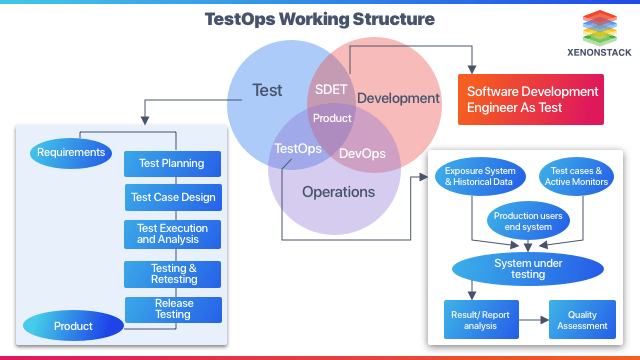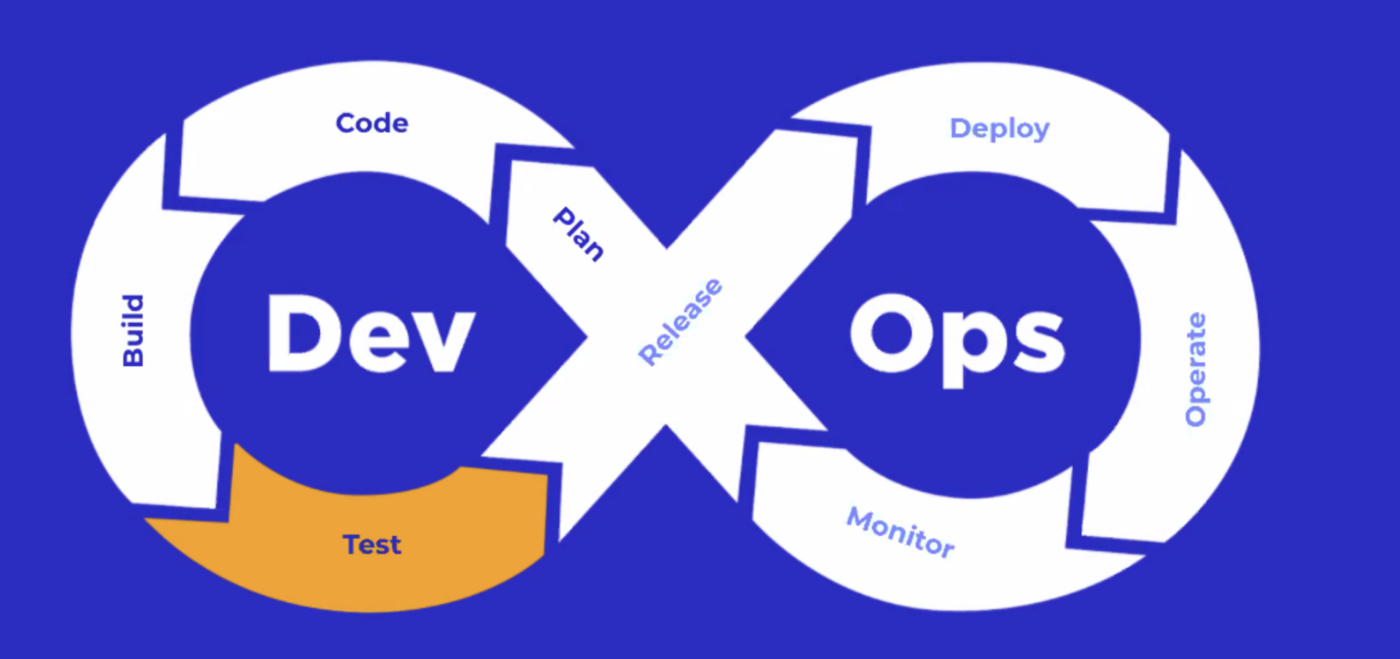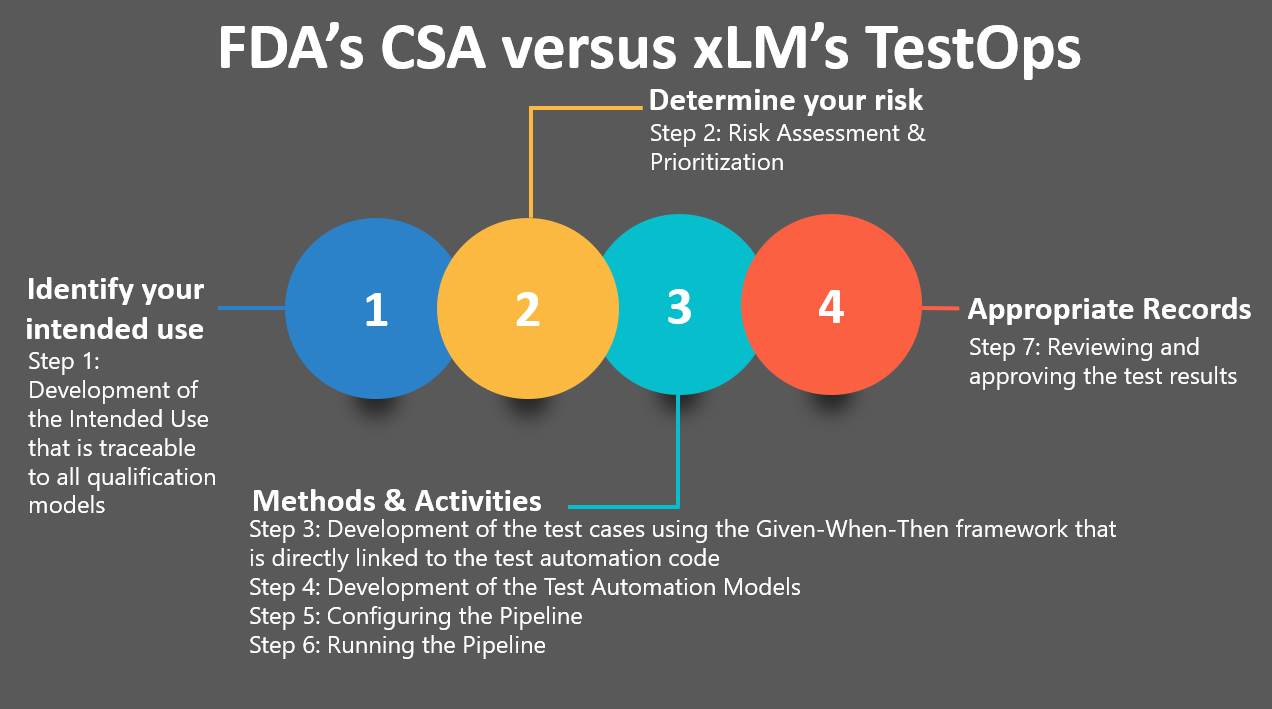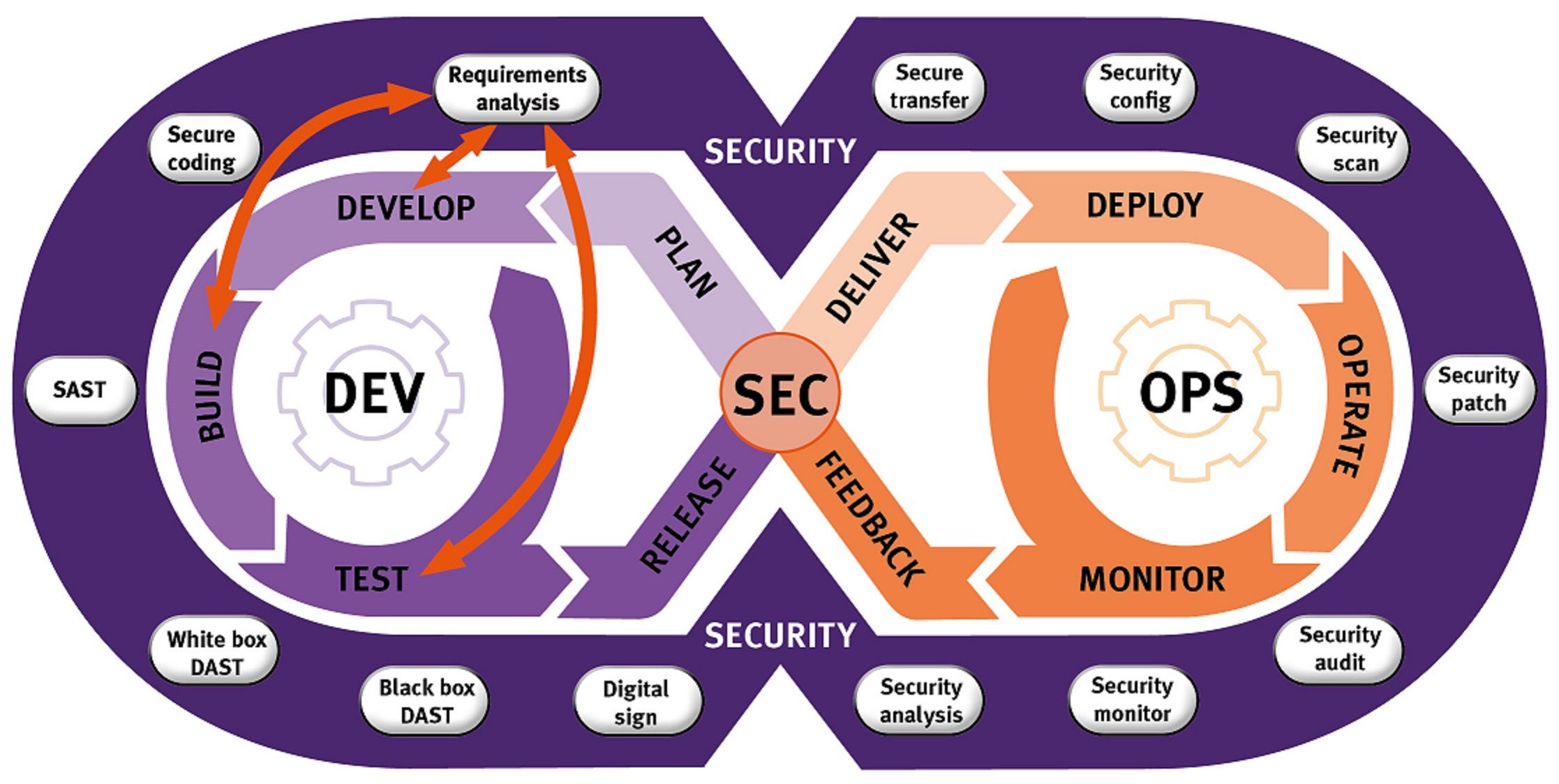In this era of digitalization, the definition of TestOps Framework is not a difficult task to find. You can get it on your fingertips in seconds, but defining the TestOps Framework will not solve your problem if you want to learn the concept, TestOps. Understanding the concept is necessary to implement it in SDLC (software development lifecycle), my friend! So, let’s deep dive in the sea of TestOps concepts.
TestOps Framework is quite evolved and is a newer version of traditional testing that checks upon the quality of source code, functionalities and services provided by a particular software product or application. TestOps Framework has innovated and benefited the way to carry out different types of testing as per the requirement, by combining both Development team as well as the testing team to have the same role of Ops. TestOps has given us a combination of Test and Operations (Ops). This contributes to speed up the process and boosts the reliability of the software product. The modern methodologies like TestOps Framework are driving faster iteration as well as releases.
As a result, TestOps Tools are gaining attraction. Simultaneously more enterprises and testers are approaching this new discipline. Let’s get started in knowing TestOps then, Let’s get started!
What is TestOps?

source: xenonstack.com
Traditionally, the developers and testers worked in a clean almost no-overlap environment. The developer’s work was always limited to development and unit testing, but with this new concept the developers are more involved in building bug-free code and running functional test cases. Thus, TestOps Framework is a discipline of managing and scaling test automation people, processes, and tests to maximize efficiency, delivery speed and software quality. This has also made it easier for testers to focus on the production environment and high context scenarios, they can keenly concentrate on collecting and identifying the right and required data. Then, they set up tools to run the tests in production, this helps in checking data and analyzing it. The abstract definition of TestOps Framework is that it’s a methodology that promotes close interactions between IT experts, developers and testers. The more specific ones are:
Development has changed drastically, apart from unit testing; they are responsible for creating bug-free code and for running functional test cases.
The Ops task has been changed too, the monitoring of data for good product quality and the task of performing rigorous tests to achieve a high context user scenario is now added to the tester’s skill set.
There is an expansion in the role of a test automation engineer to maintain the automated testing environment. This implies that to perform automated tests, the engineer packs the tests in Docker and launches the software to be tested. Then, he runs the tests, collects the results and provides it as a report.
The types of software testing is also changed and expanded with the required load and reliability testing. The testers are then responsible to monitor all systems both in test environments as well as in production.
Thus, TestOps Framework is a methodology that promotes testing in production to save time and resources usually spent on creating test data. This allows more time to be spent for monitoring and analyzing metrics, as well as for making changes in the application or software product.
Thus, the TestOps Tools are successfully adopted now, as a part of SDLC on many projects by a lot of organizations and enterprises. Companies like Google, Amazon and Microsoft are maintaining central teams and have been managing to have high dev:test ratios from 3:1 to 8:1. This has made it easier for developers as well as testers to create tools for deployment and monitoring.
Why is TestOps Framework Important?

source: miro.medium.com
In TestOps Framework, we are working with automation testing with different tools and processes as fast as possible but to start testing in production, there is a need to take a step forward with TestOps Framework. Thus, this shows the important of TestOps Framework as following:
- Previously in the traditional testing approach, Docker packs were not included. But, with TestOps Framework, engineers are responsible to perform automated tests in Docker, then the results are collected and analyzed.
- Before, the testing cycle was in need of the fully developed module to test, but with TestOps Tools, Engineers work with all the builds updated daily over the production site.
- TestOps Tools encourages testing in a production environment, which is not attempted in the Traditional testing cycle.
- With the CI/CD mechanism, the traditional approach of testing is not enough, instead some extra skills are required to acquire for testing in CI/CD processes.
- The operations team gets involved for configuration details, alarms, failures, networks and much more, which speeds up the whole CI/CD process.
Thus, TestOps Framework has become an excellent chance for QA in DevOps testing, (remember, TestOps and DevOps are two different concepts.). Talking about DevOps, the quality check is complicated while working for automated pipelines, this increases the testing because the complicated applications have multiple checkpoints, interrelated services and many more to get verified and validated for testing.
Features of TestOps Framework:

source: pinterest.com
The conventional approach of testing is followed after the complete application or software product is built. But, TestOps Framework works otherwise, it keeps an eye on providing what the application or product team requires to test. Thus, the features of TestOps Framework or TestOps Tools includes the following:
- Integration with DevOps: TestOps Framework and TestOps Tools provides a transparent workflow. The build system acts as the central system, the developers, engineers and testers check the code present in that system. They check the APIs and ensure their total workability, also whether they are running properly or not is judged. Then, the completed build is marked as a ‘Success’. A separate listener application works alongside and notes each build at the start, to the end. The application, after the running of the application swiftly, indicates its build status as ‘Success’.
- What tests to run and when to run: For the smooth working of the software product, the teams should have a clear idea of what should be tested and when should be tested. After every code change, code commit happens; the code should be then tested and bugs should be removed. This is attempted without any human intervention. TestOps Framework assures that the Quality Assurance (QA) team reviews all the rest API’s. It ensures that the product is running successfully.
- Not to stand up the whole system in test: The recreation of the whole testing platform is outnumbered, because the modules and micro-services are tested separately. Individual testing of components of the product ensures that the bugs and errors are removed at a primitive stage. The fast product delivery and consistency of all the APIs should be maintained. Testing services here implies that the message is sent from the original service and the message broker receives this message. The secondary or downstream services are not in need of testing at this point as long as the respective APIs are maintained by the service that is receiving the message.
- Teams should be allowed to test their changes with upstream and downstream users: Sometimes, it’s difficult for some tests to be run in isolation, as they depend on many external resources or services or contribute to other software products/features. Thus, these tests require the consumers. But, there is a possibility that the consumers are not in the same location or codebase. To ensure the consistency and to root out changes to these downstream consumers without manual human intervention, the TestOps Framework enables provisioning of other modules post build. The consistency of code is maintained post build too. Here TestOps Tools comes into the play, it provides all the modules that can be utilized and provides them to the downstream consumers without manual intervention. And these modules are to be placed at the same location as the other configurations to be tested.
- Fix every bug at primitive level: The TestOps Framework or TestOps Tools provide a unique aspect for automated testing and challenges as compared to testing normal application software. It works with the Ops team to fix every bug or issue at the initial development level. It also works with the Development team to set up automated build and deploy processes to overcome bugs at initial stages. This also plays a vital role in integrating the selenium automation testing with the development team in the process of Continuous Integration. Also, to ensure that the TestOps application functionality is working efficiently, the techniques employed are in-house testing tools and zero-bug policy. This policy makes sure that no failure occurs during the build and thus, bugs are reduced to zero.
Tools of TestOps Framework:

source: embedded.com
TestOps Framework is a discipline of managing testing operations at the scale of test coverage, developers, engineers, testers, QA Experts and activities while optimizing quality and delivery speed. This extends along all the testing events and activities to help teams better plan their testing, organize and control tests and gain insights that drive continuous improvement. This can be managed under a single roof, through a tool. There are limited tools available as TestOps Tools, these are:
- Katalon TestOps: Katalon TestOps is a rising product to apply continuous test execution and analytics to integrate products of better quality. This tool provides cloud-based services to test and integrate simultaneously. It is one of the best and renowned TestOps Tools used for TestOps. It also supports some of the famous continuous integration tools like CircleCI, Jenkins, Bamboo, Azure DevOps etc. It can also integrate with testing tools to attempt cross-browser testing, automation testing etc. You can read more about how one can Integrate LambdaTest With Katalon Studio For Faster Test Cycles! ; To apply TestOps to the software product development and testing process.
- Allure TestOps: Allure TestOps is a next-gen software quality management platform that brings together automation and manual testing. This also helps in leveling up the quality of the product and in boosting the QA and development team’s productivity by setting the TestOps Framework. You can use numerous frameworks, tools and processes to enable faster software delivery. It also integrates seamlessly with a lot of frameworks and keeps all the testing data transparent and centralized. This also allows generating test documentation based on live test tracking results and analysis. You can also keep a track of the project’s progress at a glance.
- Puppeteer: Puppeteer is a testing and automation tool developed by the Google Chrome team. It allows you to automate most of the activities with a real chrome browser. It is a very flexible tool that can be used for a lot of ways, including automation testing and end-to-end testing. Not being a specific TestOps Framework or one of the few TestOps Tools, it’s capability helps us to be used for different types of testing like smoke testing etc. Here, you can verify whether a recently deployed application is available for the users and running smoothly.
- Testim TestOps: Testim TestOps is one of the recently developed TestOps Tools. It possesses some valuable features like helping organizations achieve control by branches and pull requests to regulate changes of test cases. The organizations can assign owners of tests, filter them and report results to the test owner. They also evaluate how one or more tests behaved in production without impacting the build. The final cherry on the top is insights provided by charts and reports that give the data on each test and of each team.
How to build TestOps Infrastructure:

source: pinterest.com
Building an TestOps Infrastructure from the beginning is a tricky challenge. TestOps Framework has some valuable points to be looked up for when you are building a TestOps Infrastructure. Let’s understand those points below:
- Building a Cross-Platform solution: The users are always comfortable with the cross-platform solutions. Now-a-days, most of the platforms have different integrations and are quite connected like mobile,web, rest APIs etc. There are a lot of open-source tools available for developing one-in-all solutions like Mulesoft etc. You can use any framework you like, but choose complex solutions that will save your time and budget.
- Best practices for Test Maintainability: For test maintainability, you should stick to the main practices and good projecting patterns based on object-oriented programming concepts. The latest trend of testing is functional testing via page objects. But, theoretically it’s possible; Practically it’s quite difficult to maintain. Thus, using the page objects, check the business logic and to check UI components like navigation menus etc. gather the same in separate classes and separate UI objects. The combination of rest APIs and UI components make tests more stable.
- Results should be transparent for management and development: After the automation tests are performed, the Charts and emailable reports are crucial and are to be prepared. For management, the Automation Engineers are set to do the visualizations of test results through graphs, charts and tables. This gives a clear vision for management. The development team should run smaller test suites of five to seven minutes and try to include this in the process of development. This will not only give the opportunity to get test results fast, but will dig the relationship between developers and QA automation department deeper. Then, comes the turn of manual QA. They should be given the test results with software to check the artifacts, logs, graphs etc. They will check whether the test has failed due to a glitch in the project or it’s because of the weak testing environment or infrastructure issues with Selenium automation testing tool or Appium tool. 5 – 10% tests fail and if manually checked will take a lot of time, so this could be done by the manual QA engineers. The QA management keeps a better track of testing velocity, and the exact amount of time taken to complete the task, this helps in managing time for the further tasks, so that the team can complete those in time.
- Integration into the CI/CD process: TestOps Framework triggers automation testing on the new code commit or on the new pull request basis. These tests are smartly grouped into tested features and scope. They should be organized in an intellectual way – not only by the amount of acceptance and regression, but also let there be some opportunities to test the features. The test suites should be formed on the basis of profile or user management, so that if developers are writing new functionality, they can run a certain set of tests and not have to wait for acceptance and regression tests to be completed. Provide these tests with flexible configurations like, to have a choice to make for browsers, devices, configurations etc. Here are some tools suggested for the automation testing.
- Selenium automation testing tool/Appium tool: Selenium automation testing tool can be used for web automation and Appium for mobile automation.
- For test lifecycle control, go for TestNG. You can also use Maven Surefire Plugin, if you want an artifact as the end result.
- For real-life and historical reporting, you can use RabbitMQ and Elastic Stack for archiving logs and searching through those archives.
- We can use LambdaTest online Selenium Grid, as our whole testing infrastructure and this could work while the automation testing, real-time testing etc.
- Go for Katalon TestOps Tool to implement the TestOps strategy and architecture. This will also generate logs, charts and graphs for proper time management as well as test management.
Tips to follow TestOps methodology:

source: devops.com
Testing process is already full of bottlenecks. You could not afford to make one more by inefficient implementation of TestOps Framework. Here are some tips that will surely come handy while bootstrapping the testing process in TestOps. The tips are the following:
- Map a fruitful plan: To ensure the adoption of TestOps Framework, extreme caution and care should be taken while mapping a plan out. These plans should be very specific towards the required configurations, for which the product is developed. A general plan might work for one configuration but could fail for the other. After planning the tools must be chosen, specifically according to the duration of testing. Always treat these tools as a benchmark.
- Gather consistent data: Data preparation has been on the shoulders of QA specialists, but with continuous integration of micro – services and numerous softwares in play, gathering and collecting specific and legal data sets for the production of test-cases becomes more challenging than ever. Thus, for increased reliability of the test results, the test data should be kept universal for all systems.
- Perform continuous testing: Continuous Testing is imperative to frequent development and execution of the automation test suites. In other words, it is the implementation of the automation swift in the required testing environments. Apart from this, it imparts the infrastructure with the balance between the scalability, usability and availability of the environments.
- Work on speed and quality tradeoffs: In TestOps Framework, the testing process is full of speed and quality tradeoffs. These tradeoffs get self-offered in between the delivery speed and product quality. Although TestOps Framework goes hand-in-hand with both sorts of tradeoffs, quality is primary. Therefore, the testers must make sure they do not compromise on the quality while undergoing the TestOps Framework’s methodology quickly.
- Analyze the testing processes: Analytics tools for testing processes and automation holds their share of importance. The documented logs, charts, graphs and data from a proper and accurate analysis can be used to make test processes better and help in influencing changes.
Conclusion:

source: bertrandt.com
Over a couple of years, the IT Industry has witnessed a lot of changes in the way of automation testing to TestOps Framework. TestOps Framework acts as an amazing tool which is a big help to a lot of organizations. Moreover, it revolves around boosting the quality of the software and thus, gives consumer satisfaction. TestOps Framework provides a unique aspect for automated testing and challenges as compared to testing normal applications or software products.
It works with the development team to set up an automated build and deploy processes. It creates a cloud or virtual technology to set up a testing environment on demand. It also involves creation of new test environments for automated environment provisioning. It plays a vital role to integrate the development team and operations team for automation testing and further initiates it to continuous integration. TestOps Framework attempted with integration of LambdaTest and Katalon Studio results in a diverse selection of CI/CD tools. This offers Jenkins plugin to help accelerate the release activities. The users at Katalon studio can easily notice a bug or defect while running automation testing on LambdaTest online Selenium Grid.
LambdaTest also offers an in-built image editor, to annotate and edit UI defects before presenting it to the team.The system can also leverage the LambdaTest integrations with multiple bug tracking platforms such as JIRA, Asana, Hive etc. or instant messaging tools like Slack, Microsoft Teams, IRC notifications etc. for easy and effective team collaboration. Therefore, TestOps Framework can benefit a lot of systems by providing features to provide control, management and insights to the testing phase as you scale quality. Thus, use the TestOps Framework’s capabilities and help more users and consumers to build quality software faster.
Get more information at Live Enhanced. Also, Happy TestOps to you!




